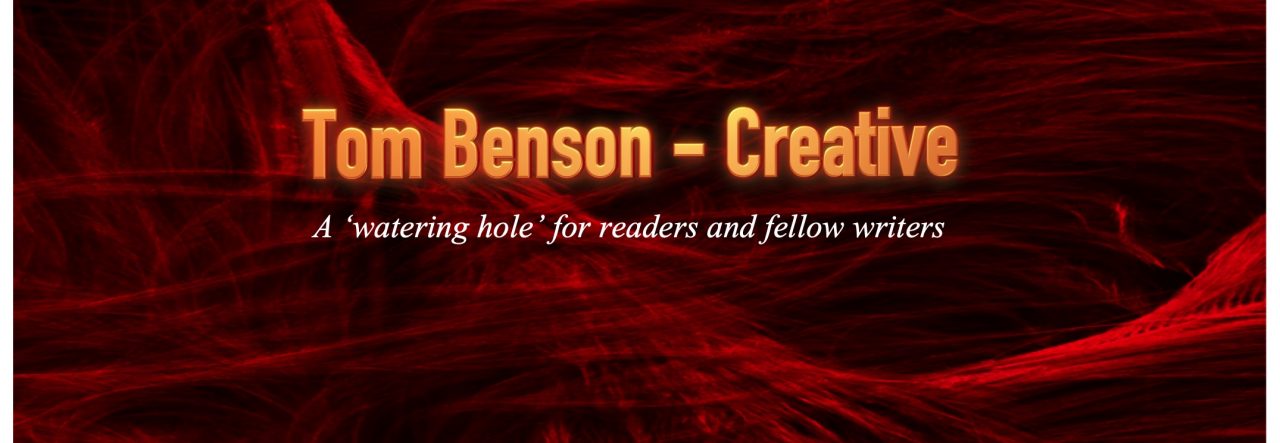What is imagery in the context of writing and storytelling?
It is the use of words by the writer to suggest a picture or scene in the mind of the reader. That’s a personal definition, but I think it’s close enough. Let’s look at some examples.
Example 1.
Marcus said: “You can’t do this to me Charlotte.”
“Oh, yes I can,” she replied and laughed.
Example 2.
Marcus said: “You can’t do this to me Charlotte.”
“Oh, yes I can,” she replied, and laughed as she sliced through the safety rope. Marcus screamed until he bounced off the rocks.
Example 3. From my short story, ‘Simply Irresistible’
‘Mark’s attention was caught by the girl’s white blouse, or more accurately its contents, because the opening at the top provided a glimpse of cleavage and a hint of white lace. Mark raised his left arm pretending to check the time so he could look straight ahead.’
At one time, fictional literature was filled with gushing, flowery prose and carried the reader along on a slow and beautiful journey through the story. The modern reader is more inclined to expect a more rapid pace, and require fewer words to fire up their imagination. They want an interesting, well-told story, but with pace.
In essence, good imagery is about using as few words as possible to conjure up a sense of place, or scene, in the mind of the reader. It can be done in narrative, or effectively within dialogue. As with all passages of writing, don’t just write it and edit it; truly imagine it. If it takes three, four, or more attempts to get it right, just keep on going, because it will be worth it.
Thank you for reading, and I’ll be back tomorrow with my word and thoughts on ‘J’.

![I[1]](https://tombensoncreative.files.wordpress.com/2014/04/i1.jpg?w=640)

Very effective the way you use actual examples to illustrate what you’re saying, another case of ‘show’, ‘don’t tell.’
Take care…
LikeLike
Thank Paul. I suppose there might be some who would say I was doing a bit of self-promotion, but it’s far easier to use something that is proven.
LikeLike
Oh, that isn’t what I was suggesting, the examples were perfect for what you were explaining – and if someone’s sufficiently intrigued to read on from the links so much the better. As for self-promotion, almost anything you write on a blog will have an element of that whether’s it intentional or not; even just leaving a short but complimentary comment advertises your presence to people – I’m often as interested in a sensible response as I am to the post to which it’s made.
Will take a look at your ‘J is for…’ post now, as am having a nice easy day of it today relaxing and resting. Speak soon…
LikeLike
Thank you for your continued support. I noticed on my online ‘recce’ earlier that you had a short story showing over the defensive parapet, so I might have to get along there and have a read. I’m assuming it will be related to your present activities. I’m heading off on my blog patrol now. Till later mate.
LikeLike
Good imagery makes a story so much better. Adding those little details truly makes all the difference between a so-so story, and a really good page turner.
M. J. Joachim
A to Z Challenge Co-Host
Writing Tips
Effectively Human
Lots of Crochet Stitches
LikeLike
Hello and thank you for the read and comment. I apologise for missing this very good message, but I’ve been inundated with comments since getting into the A to Z, and a lot of spam has been getting through. Once again, many thanks for dropping by.
LikeLike
I couldn’t agree more: don’t be wordy. I tend to use too many adjectives and adverbs, then go back and edit most out. Readers want to “cut to the chase”–me included. I have tried to read the classics, but for the most part, they bore me, bogged down in too much description. I try to give the reader enough, but not too much, and let said reader fill in the rest using their imagination.
LikeLike
I’m with you on the adverbs and adjectives. They go in as I write, but go as I edit. The lift in pace is incredible, and stands out clearly in an action sequence. Yes, the reader must be given credit for having some imagination. I’m still underway with reading some of the classics, but they do tend to bog the reader down.
LikeLike